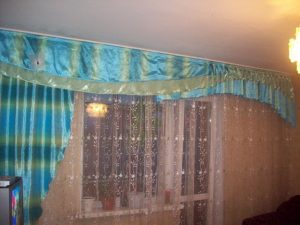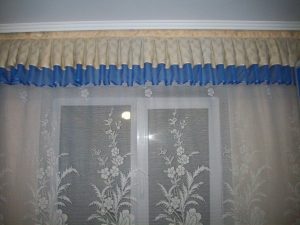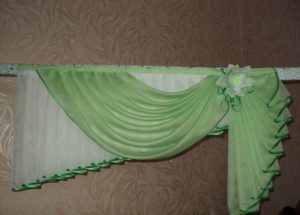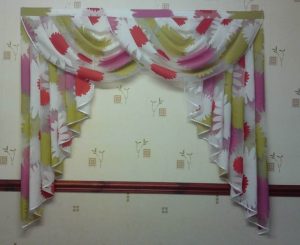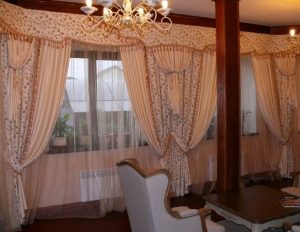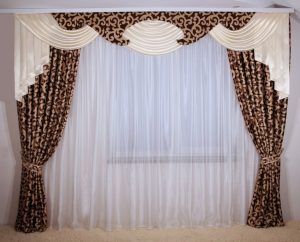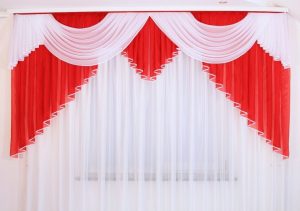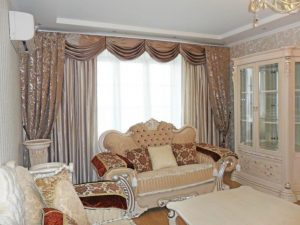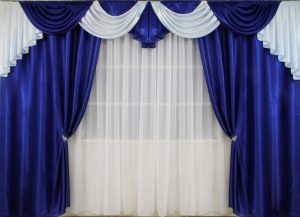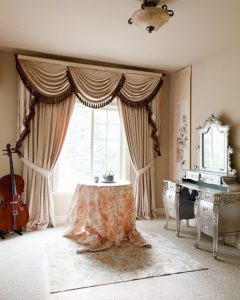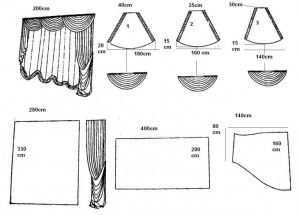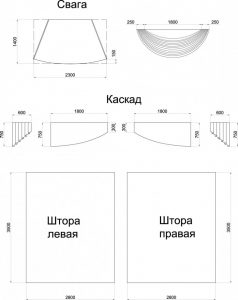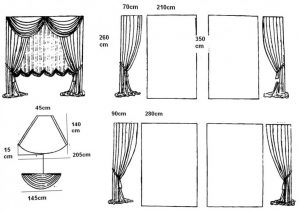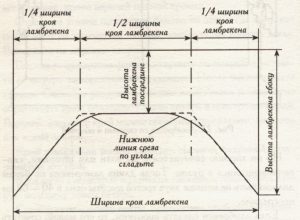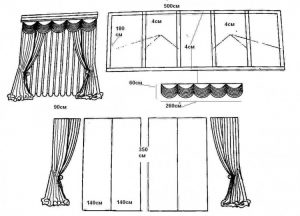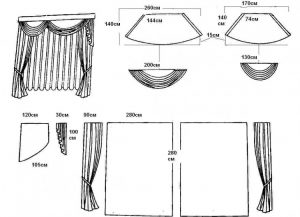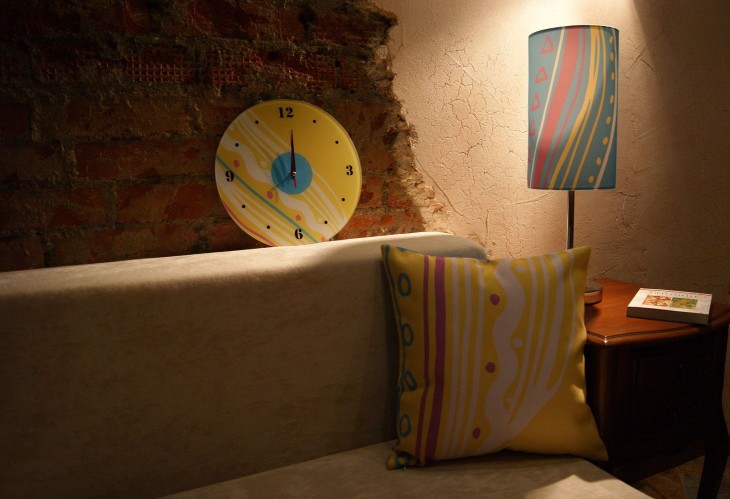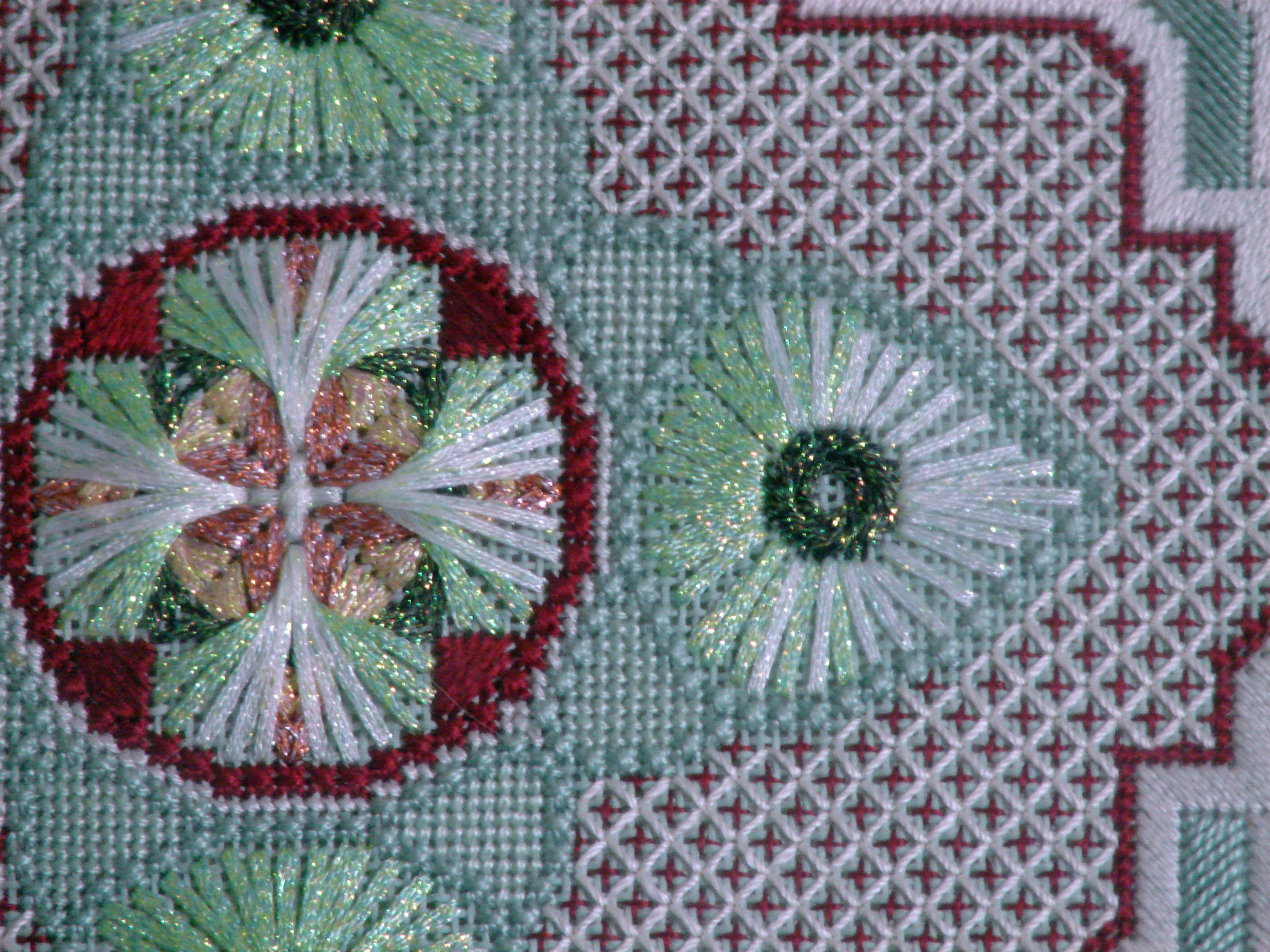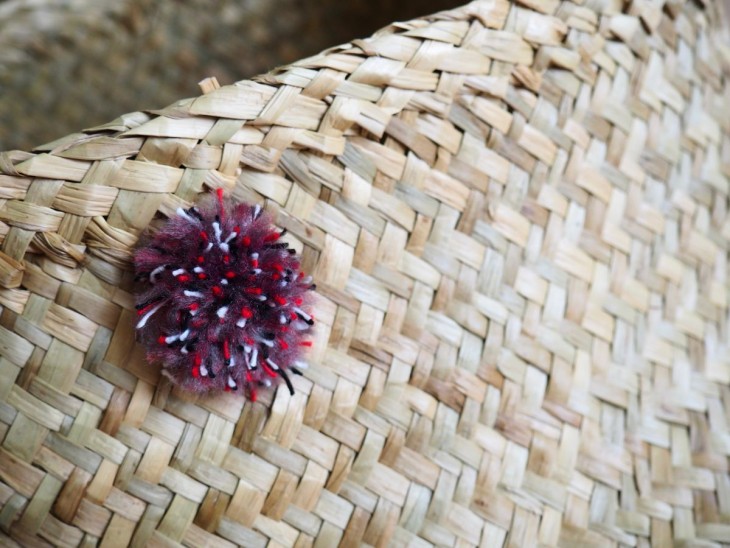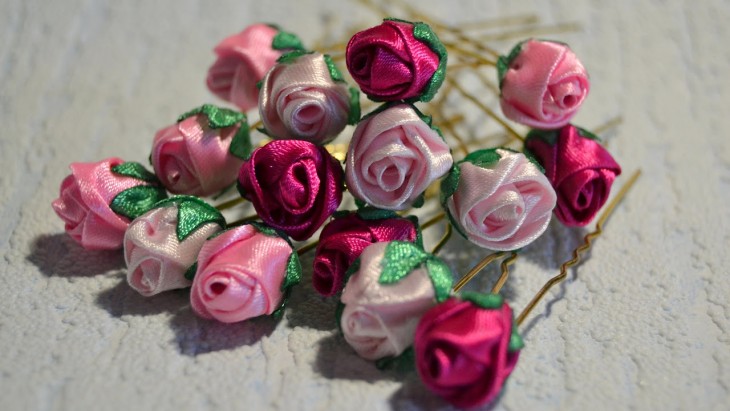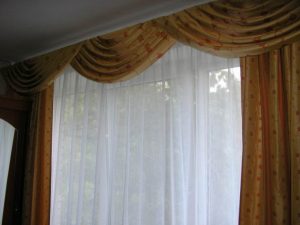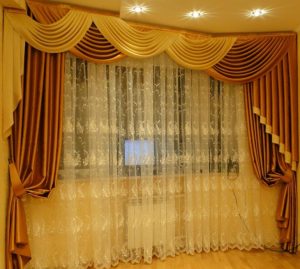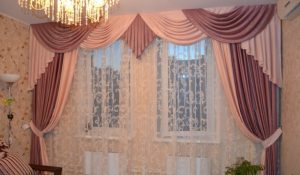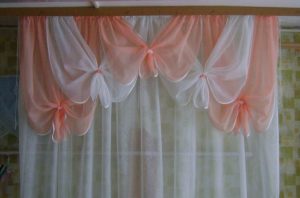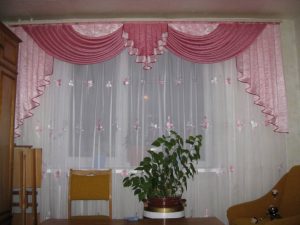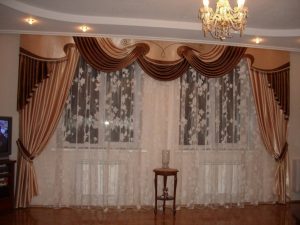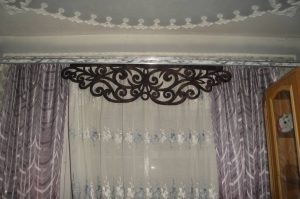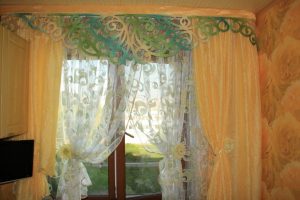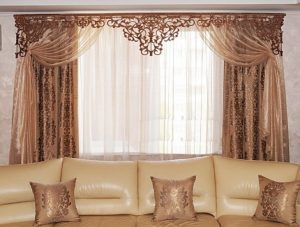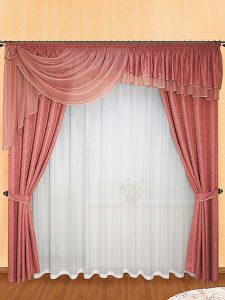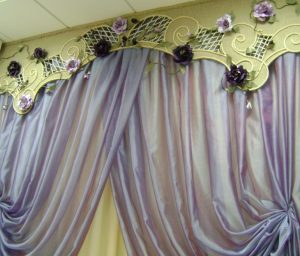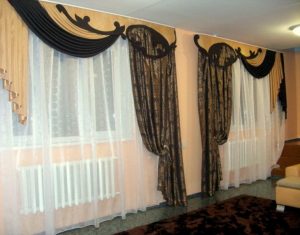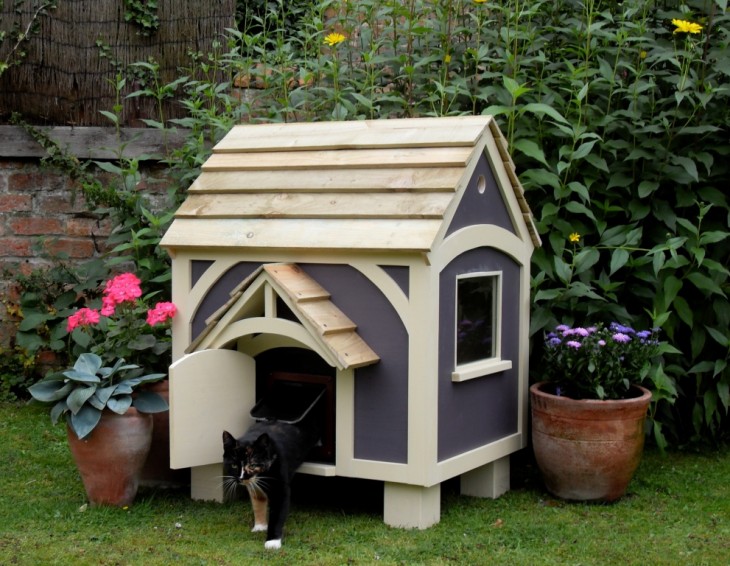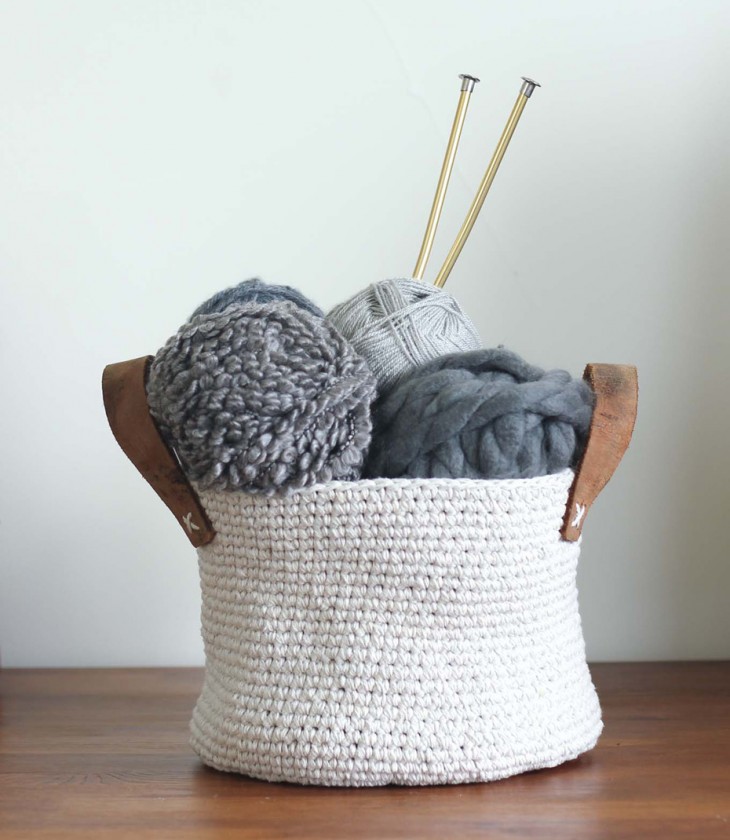Window decoration plays an important role. This element of the house is a connecting part of the external and internal space of housing, a source of clean air and natural light.
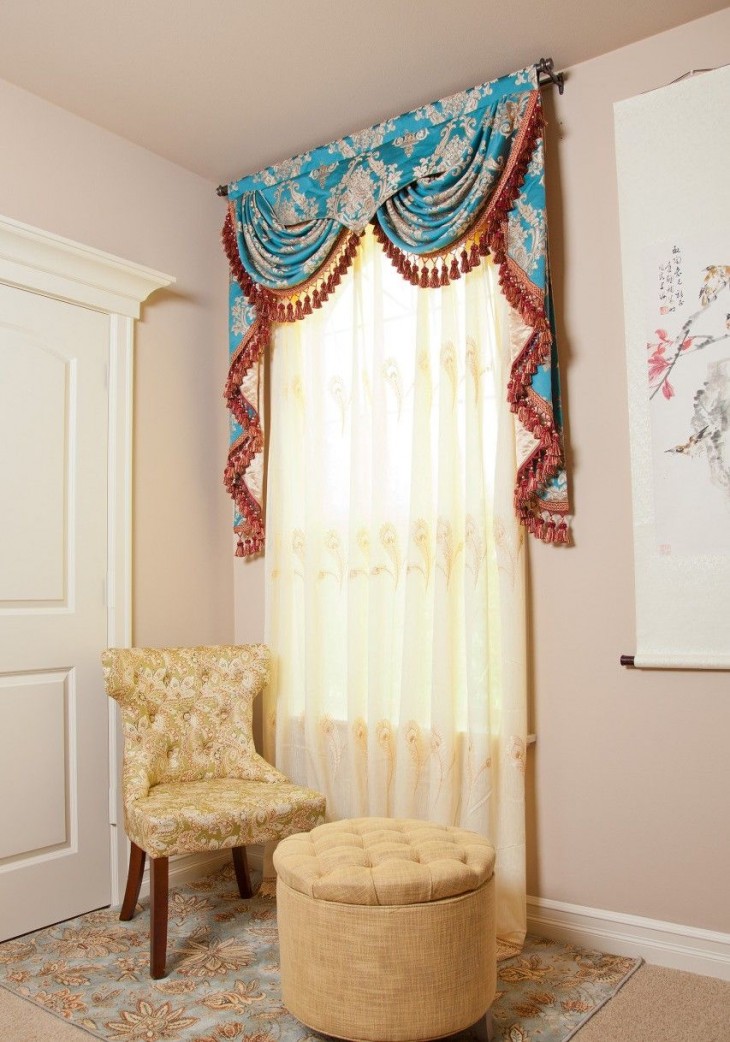
But such functionality should be beautifully presented. Lambrequins will help to cope with this.
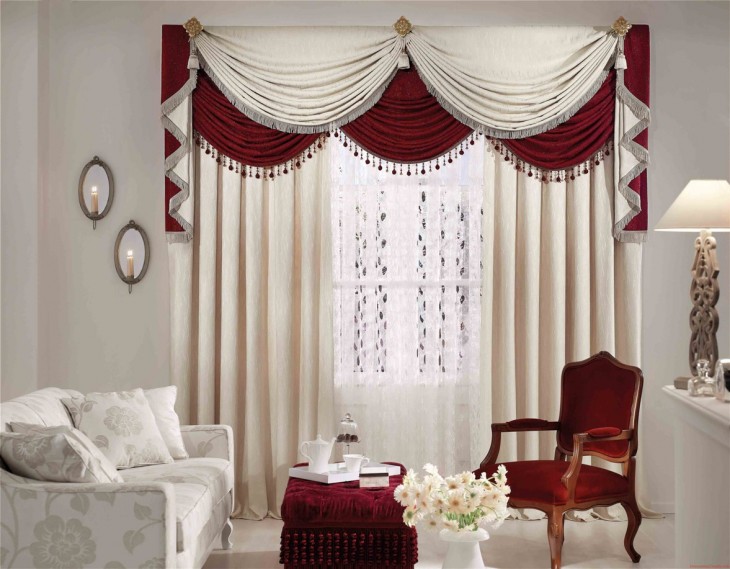
Lambrequins are often used to hide flaws of window frames, to divert attention from the fastening of curtains and tulles. This is a cleverly designed fabric panel that hangs over curtains.
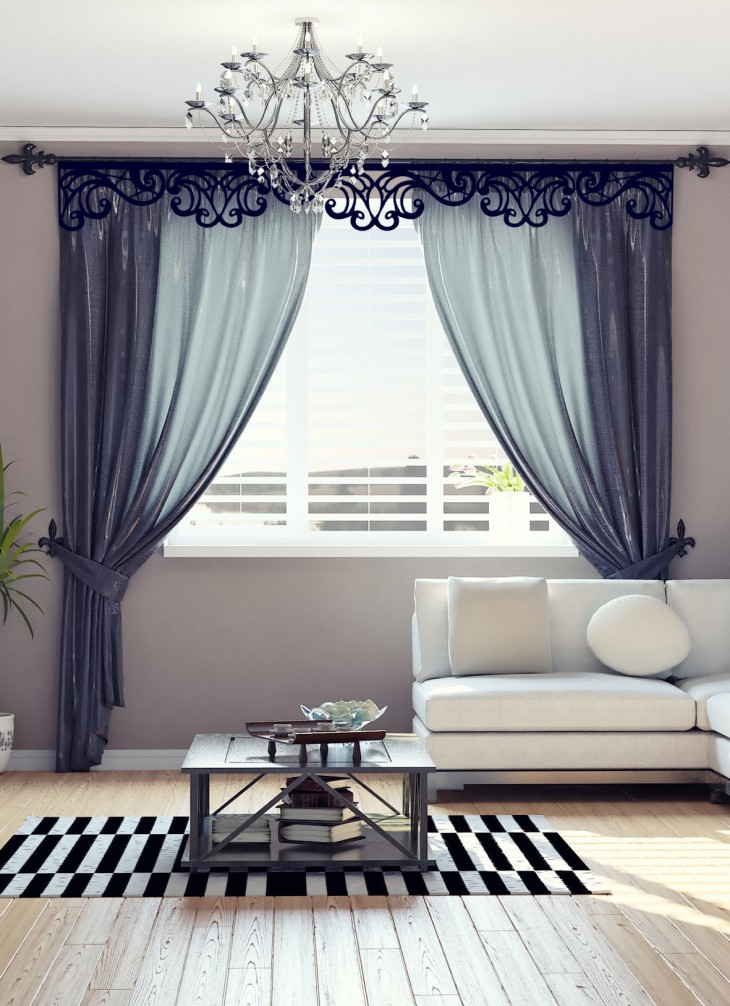
The creation of this beautiful decor component can be either simple or complex depending on the type, model. Consider the popular variations of the implementation of lambrequins.
Review Content:
Variations
Before you start sewing lambrequins, you need to choose the base option, but it happens:
- Soft;
- Tough;
- Combined;
- Curly.

Soft - a mixture of both thin and thick fabric base. The surface can be flattened or folded, and the bottom of the panel can be straight.
Decorate with decorative flowers, satin bows, bugles, lace, make curly folds. Also draped with braid, ribbons or thrown over the ledge.

Hard lambrequin - performed on a strong adhesive material (proclamin, non-woven), plastic and wood are also suitable. The pomposity of this option is achieved by giving an unusual curly shape and edging, framing.

Combined - combines a thick, dense base and complemented by auxiliary elements with a thin, soft fabric.
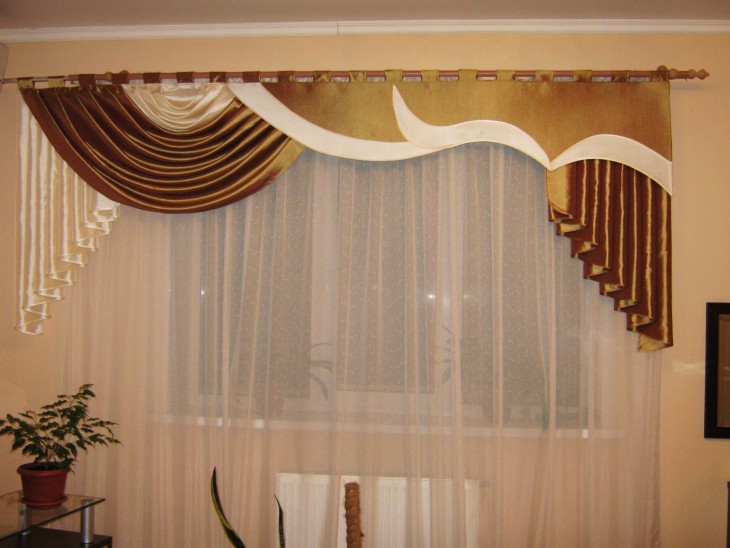
Curly - the base with a massive, voluminous pattern and characteristic holes. Openwork lambrequins are made from such a basis, the design of which is carried out thanks to burning out by laser equipment. This view does not burden space.
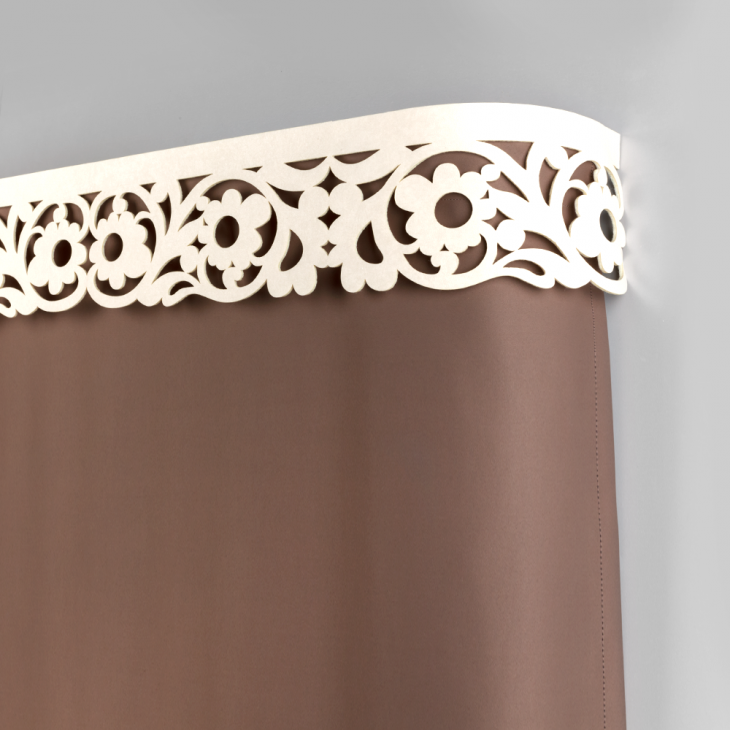
Tailoring of decorative lambrequins. Sample Templates
The panels are diverse in their design. They can be decorated with different drapery material, swagas. Before sewing them, you need to familiarize yourself with the patterns and decorative elements of the product.
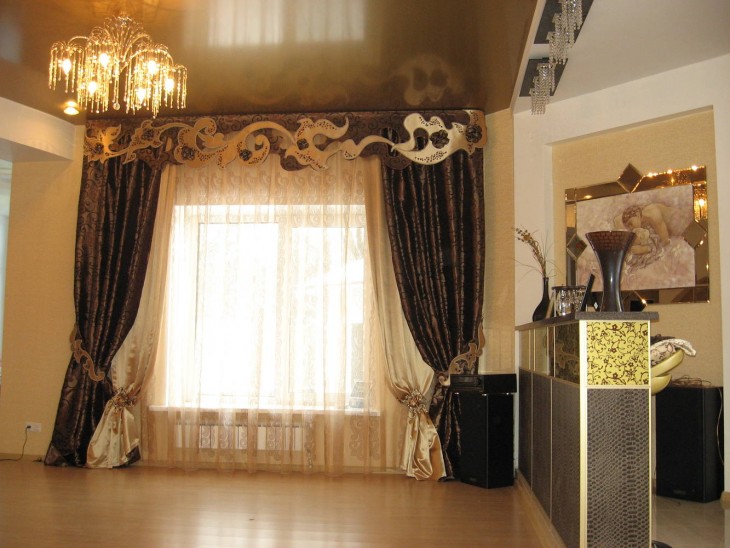
The swag element is a semicircle of thin fabric with characteristic folds. Semi-swag - the same swag, only with a hole in the upper half.
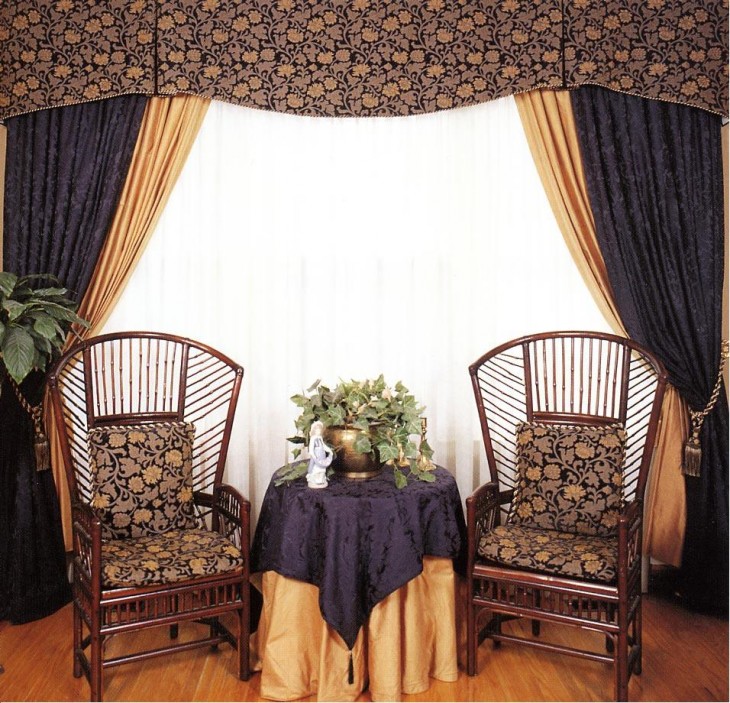
A decorative element of de jabot made of soft fabric that is located on the sides and includes a skew and creases.
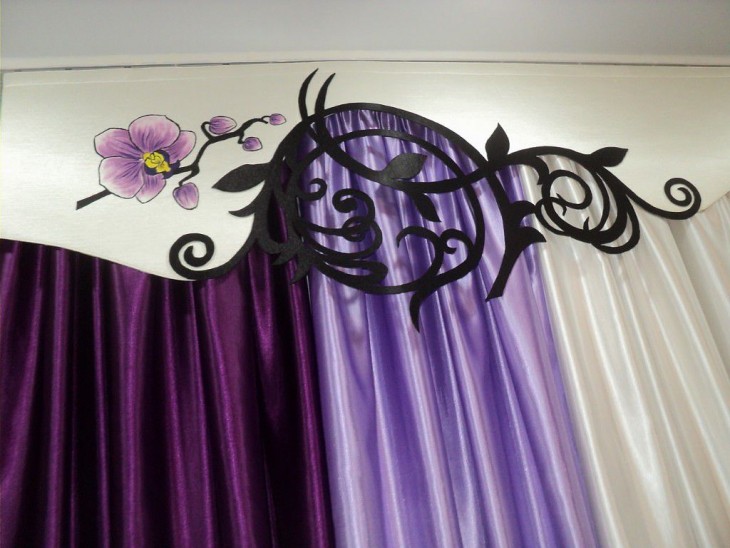
Tie - this element is formed when stitching along the side seam of 2 frill.

Template Production Instruction
Be sure to leave room for the side and top edging (up to 3 cm), for the bottom about 12 cm.
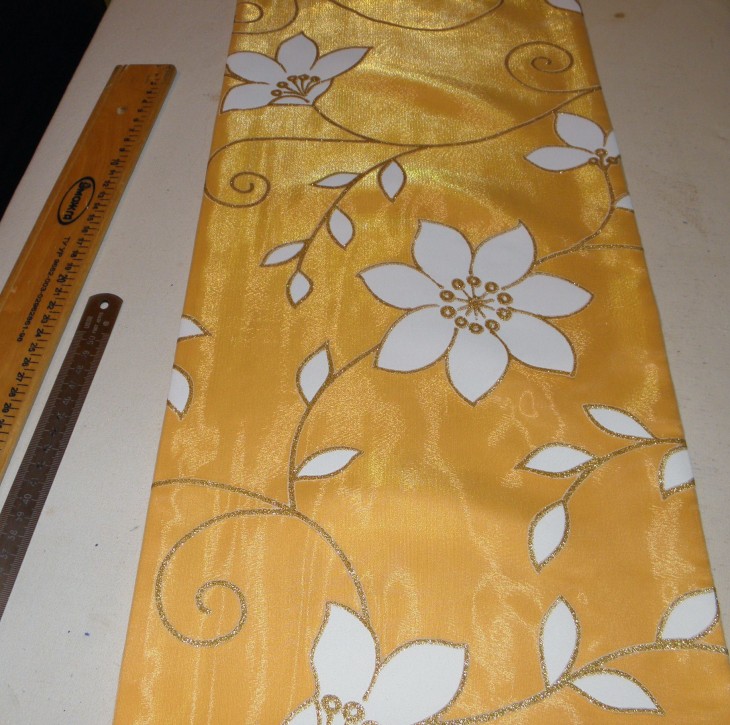
Allowances are varied, depending on the details. For example, for such an element as swag on special paper draw a half circle and add creases, while calculating the cost of the material.
Production of panels from a rigid base
For a rigid panel, we need a wooden box, if its weight is very large, then we need to take a closed one to provide solid support. The components include the facade, mount and shelf. The facade is made of wood.
Note!

In addition, we need:
- Patterned with patterns up to 4 cm.
- A sheet of thin foam is cut to the size of a panel, but with an allowance of up to 5 cm.
- Lining material, also cut out according to the pattern with 2 cm passes for the hem along the entire panel.
- Fastening tools (glue, stapler).
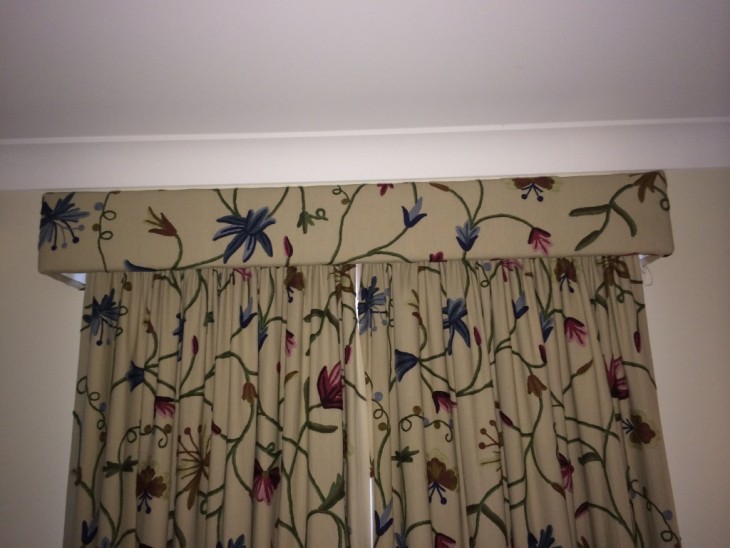
Panel Instructions
The lining material with glue is attached to the facade and on the side of the wooden box. Cut off excess parts.
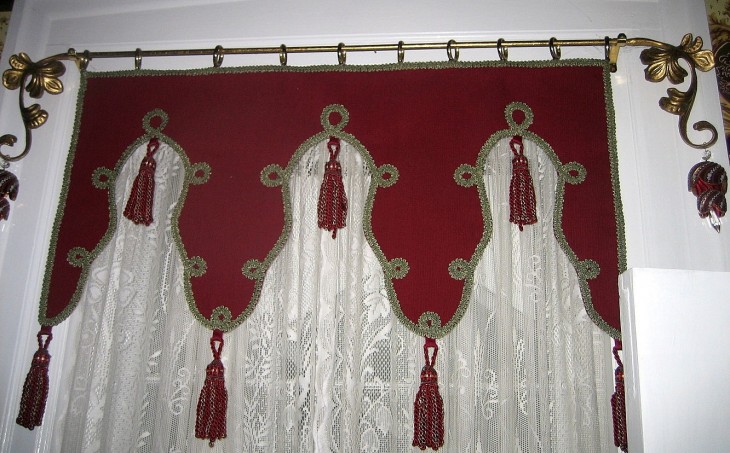
The fabric is attached to the base. If the fabric is with a large pattern, then it is shifted to the middle.

The lower edge is also attached so that nothing sticks out on the bends, you need to trim the excess.
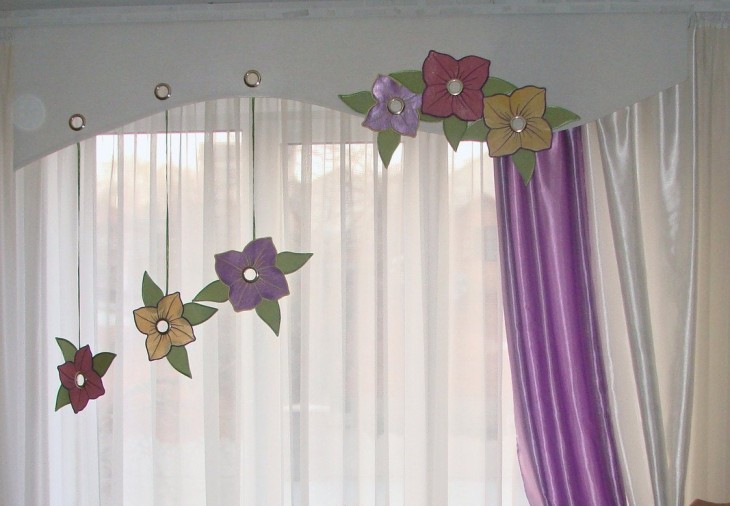
The most popular and skillful lambrequins - openwork
Having studied no less complex hard lambrequins, we learn to make an original model - openwork lambrequins. More and more attention is paid to them, as they will give the room softness, weightlessness.

Guide to sewing openwork lambrequins:
- They come up and draw a pattern. Transferred to cardboard, cut out. Circle the finished pattern. Then cut out.
- The resulting pattern is attached to the thermobando, melting it.
- A complex pattern is attached to the glue web.
- We decorate with decorative elements: laces, ribbons, lace.
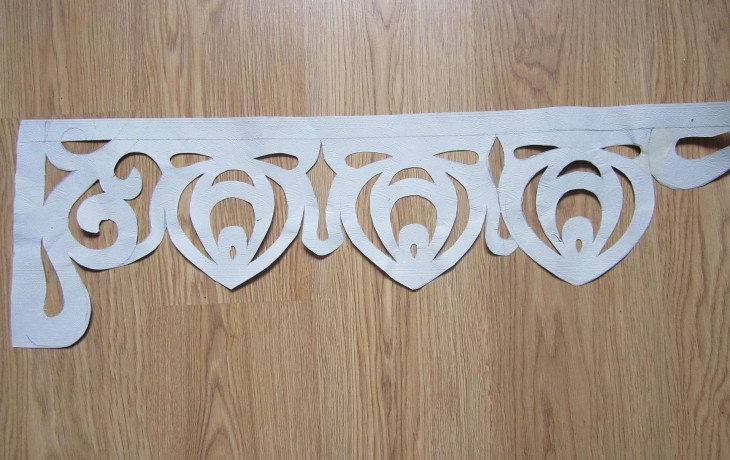
Soft lambrequins
The design is so simple that even a novice teapot will make it.
Production Instruction:
- Use soft tissue along the length of the cornice, while the shape of the fabric should be rectangular.
- Make small folds for beauty.
- If the bottom is long, then shorten. The side part is hemmed. Sew on loops from above.
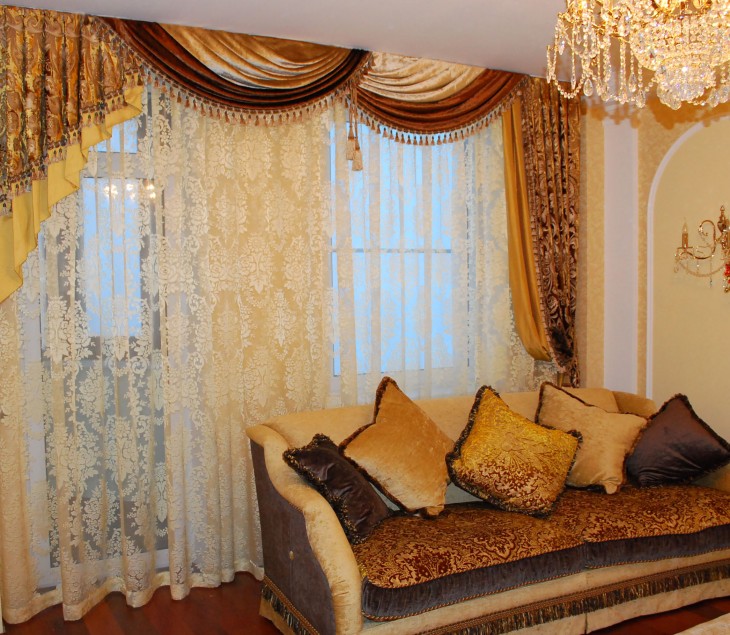
Lambrequins for the living room
For the design of the halls, lambrequins of any shape are suitable, but do not forget to take into account the shape, size and style of the room.
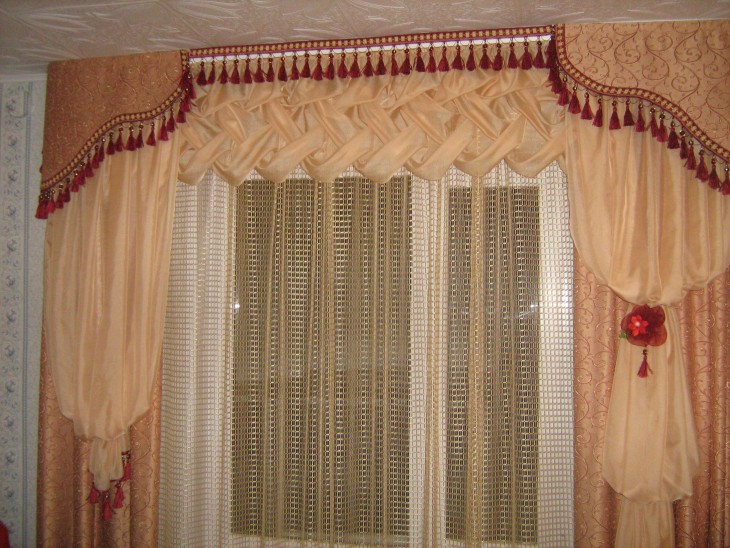
If the room is large, then you should choose large, massive curtains.
If the space is small, then with the help of light tones, it is visually expanded.
Note!
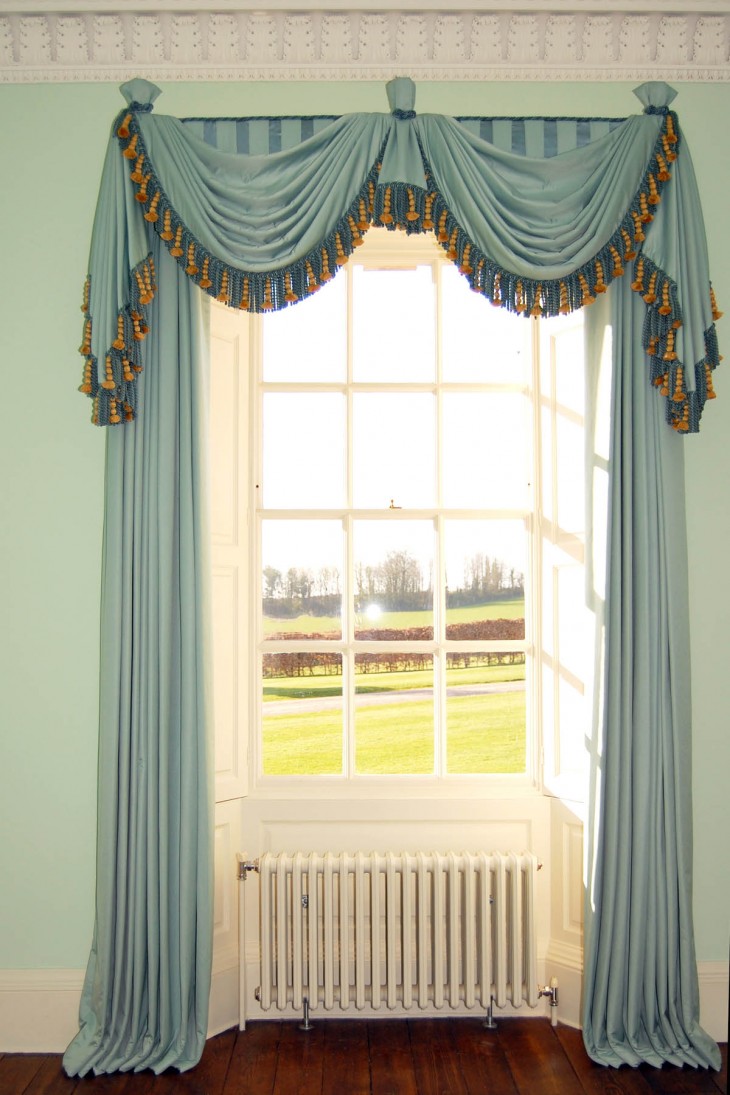
Beads, ribbons, brushes are suitable for decoration. For this room, elements such as swag, ties are considered popular.

DIY lambrequins photo
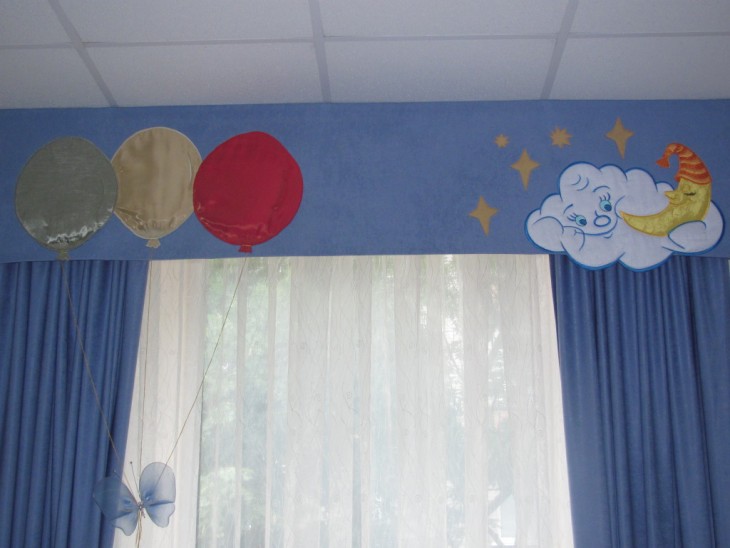
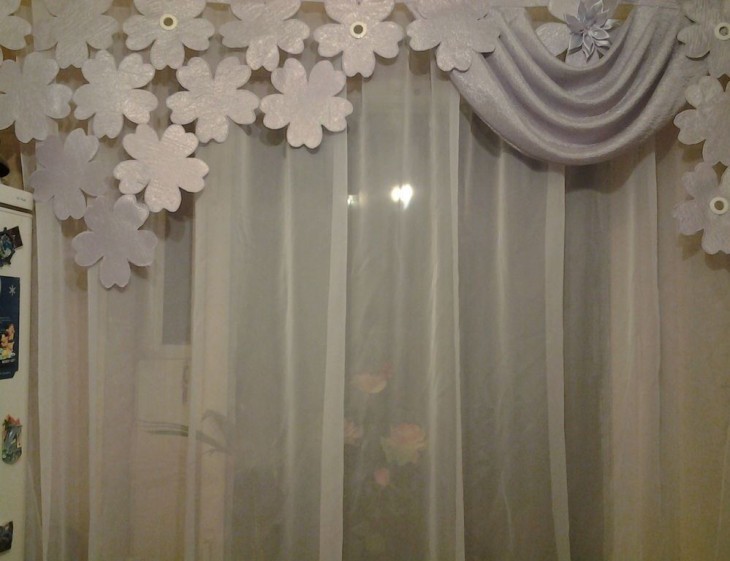

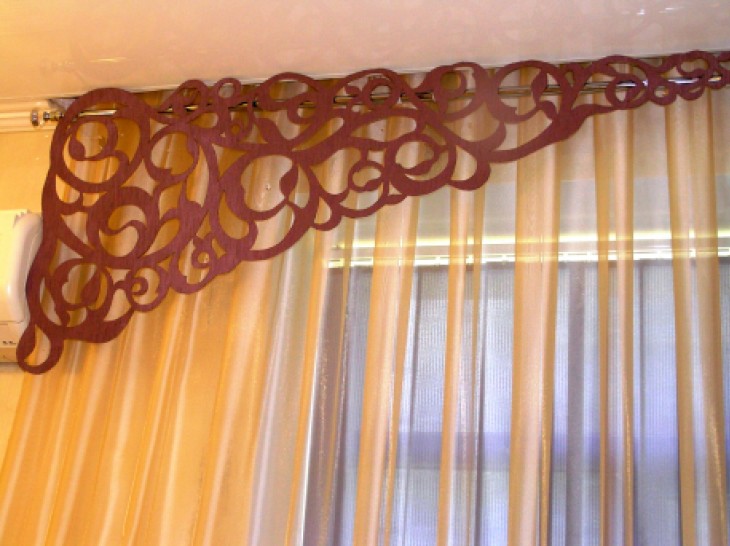

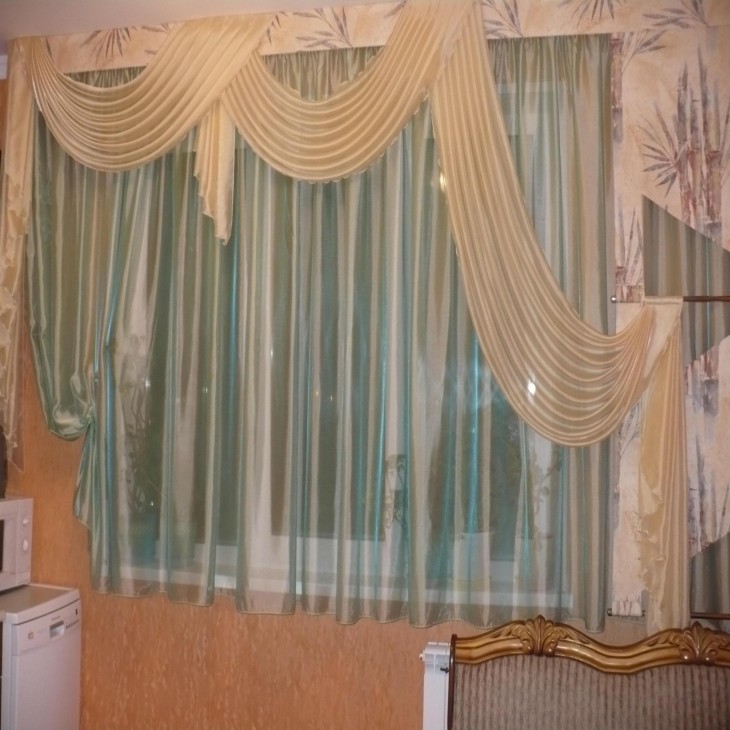
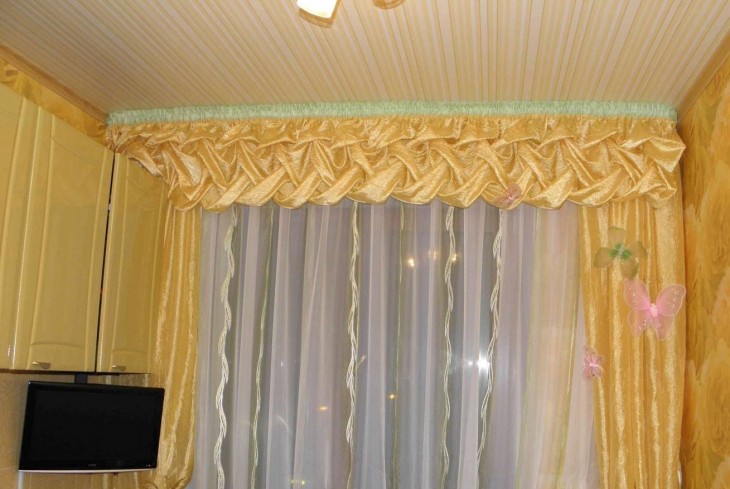
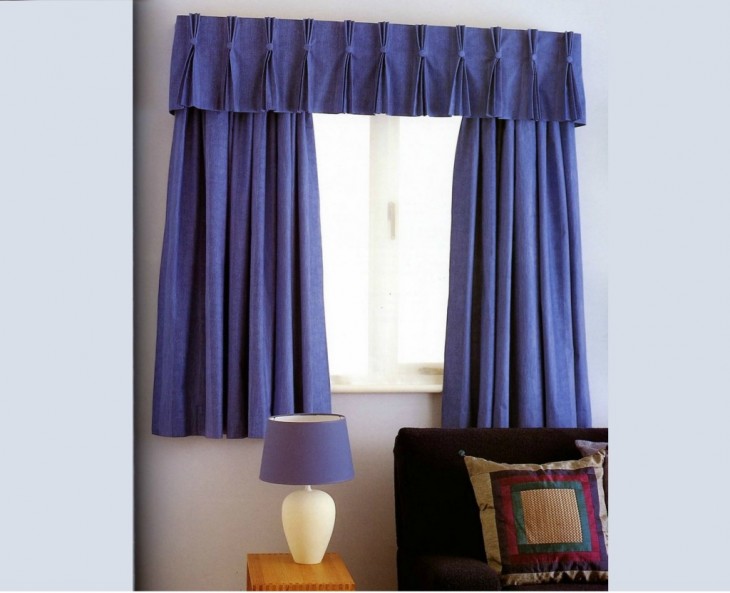
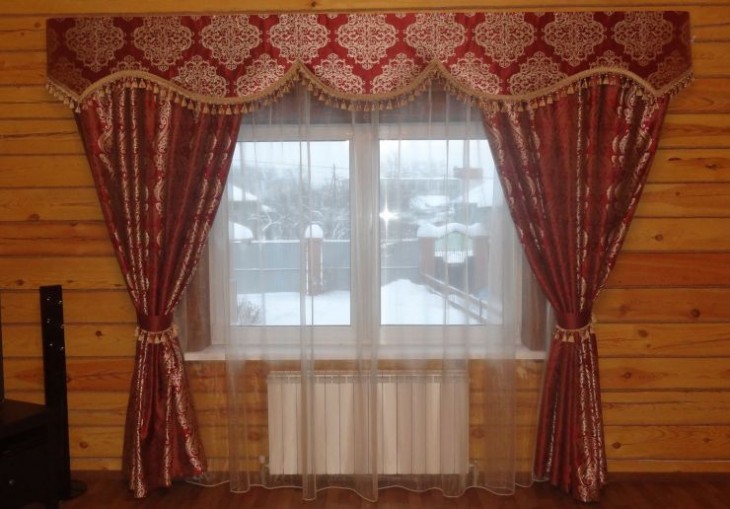

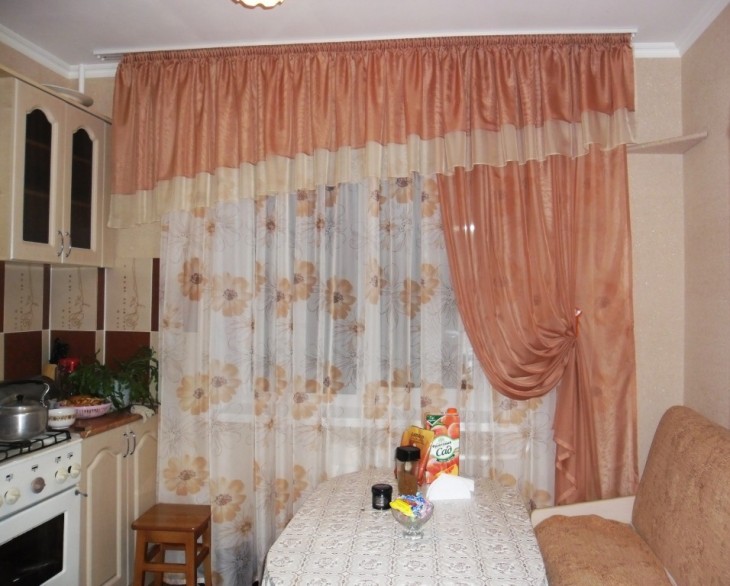
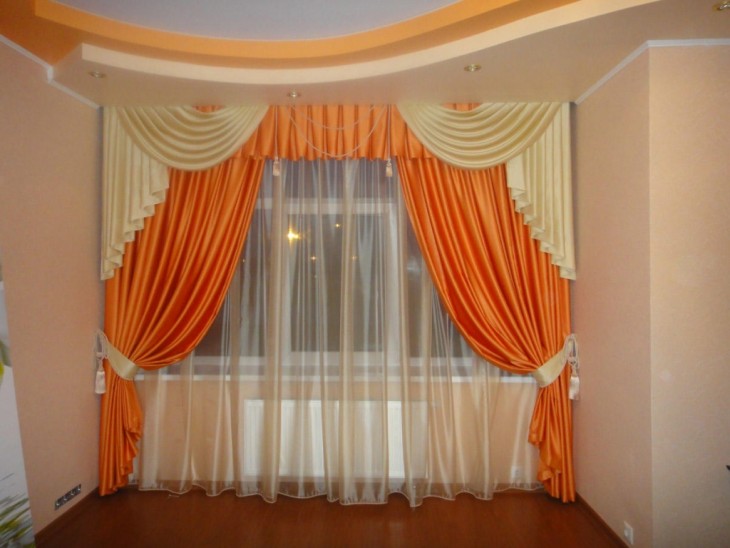
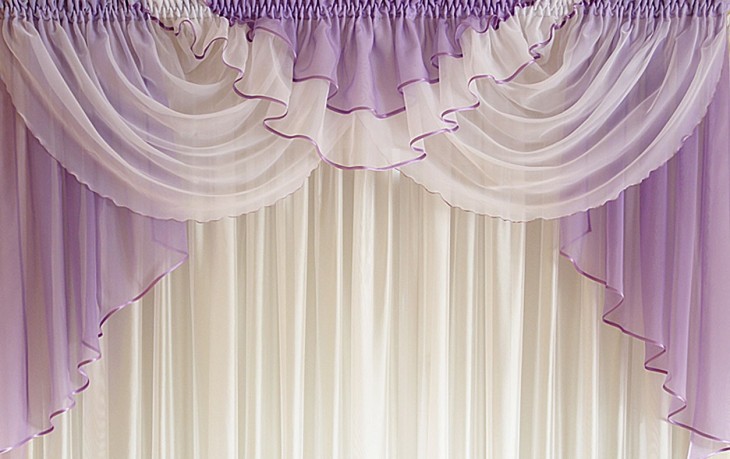
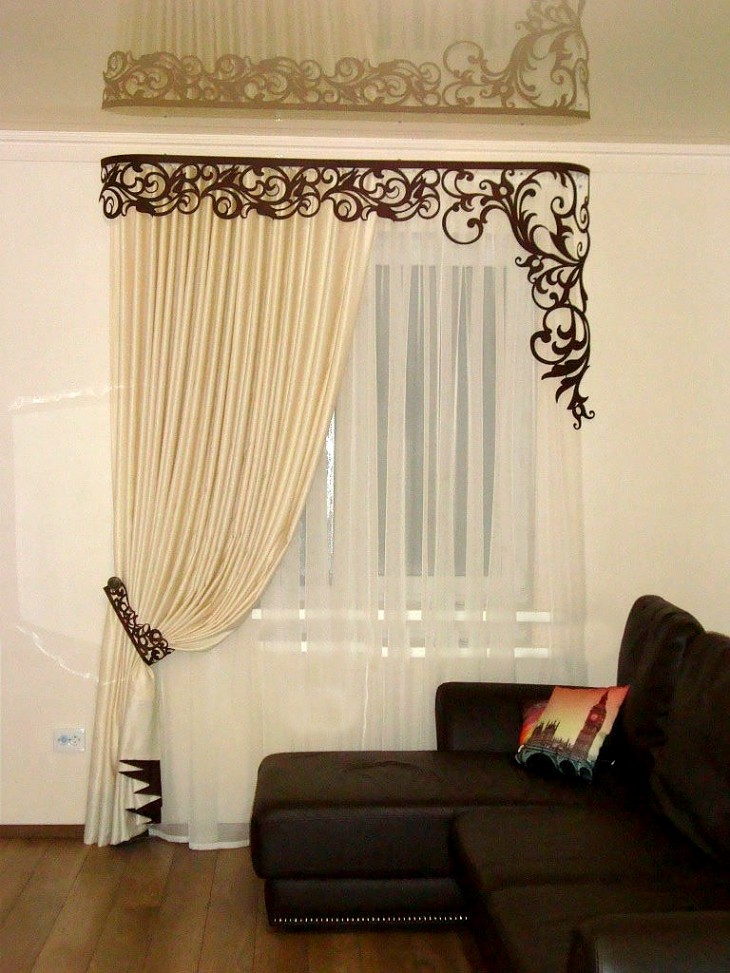

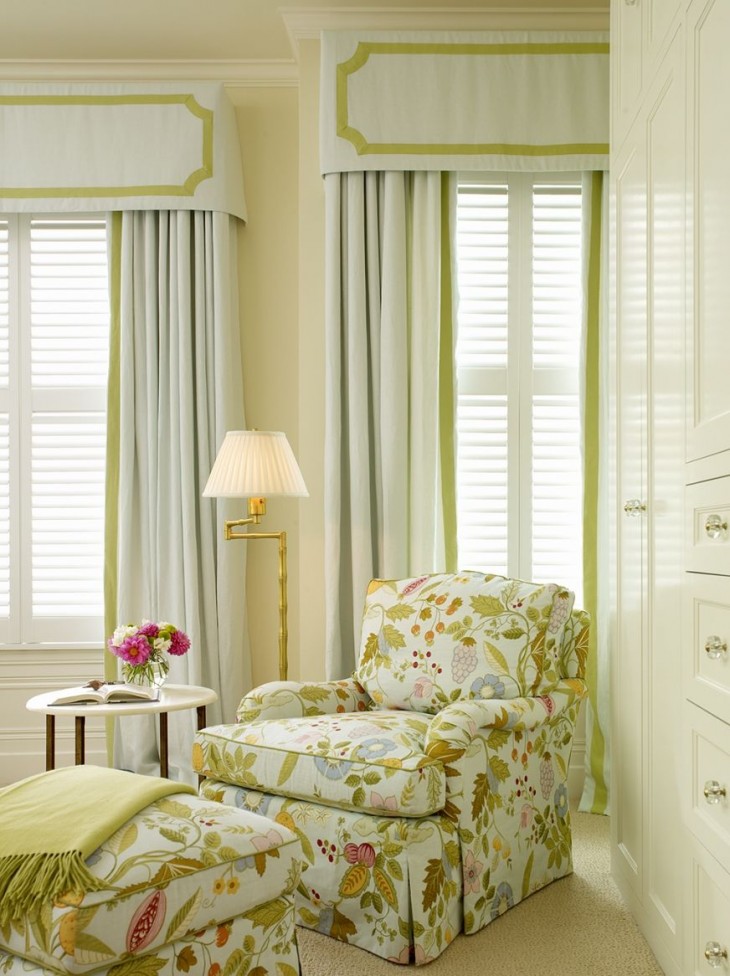
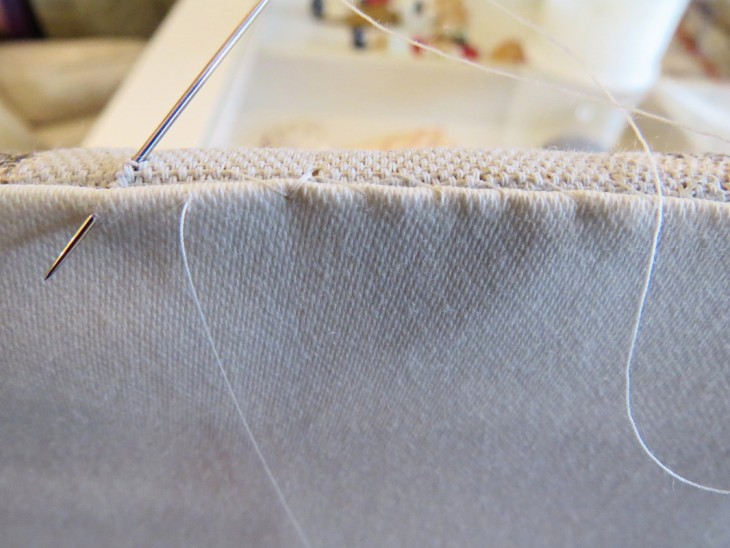
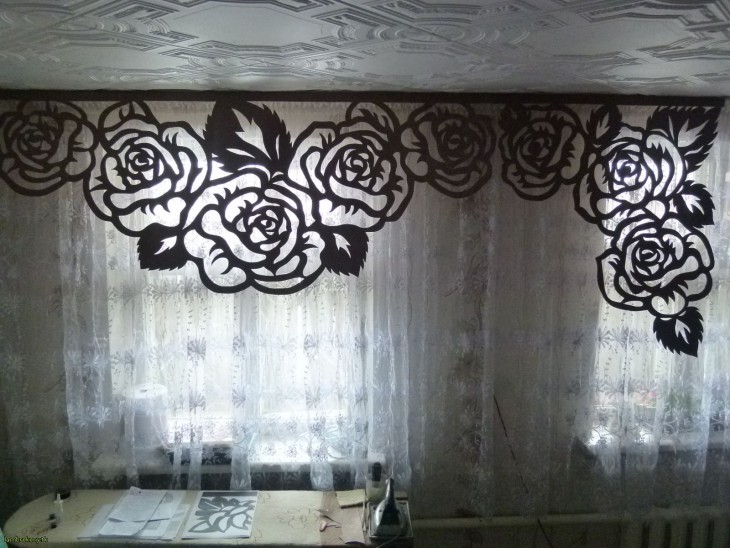

DIY countertop - 65 photos and step-by-step instructions for manufacturing
DIY panel - 69 photos of beautiful souvenir and design solutions
DIY satin flowers (64 photos): instructions, diagrams, color matching, creating compositions
DIY lamp - 68 photos of the original lampshades and tips from designers


